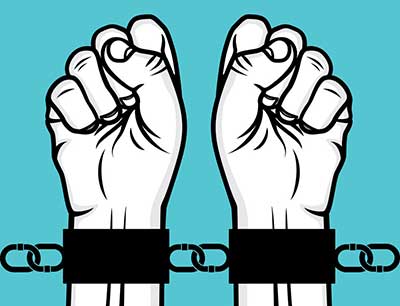Relevance: GS-1: Salient features of Indian Society, Diversity of India
Key Phrases: Deviance, Social Deviance, African-American, Discrimination, Labelling, Ostracisation, Socialisation, Adolescents.
Context
- Deviancy amplification is a theory that suggests that deviance in a society is the unintended consequence of police control, over-reaction and labelling by the mass media and popular reaction to deviant stereotypes.
- The theory is an important element within the sociological critique of conventional criminology which was reluctant in understanding the context behind the concept of deviance and in understanding crime as a social construct.
What is it?
- The act of going against the norms and laws inscribed by society is termed deviance.
- The term was originally coined by Leslie T. Wilkins who used the expression ‘deviation amplification’ in his book Social Deviance (1967).
- The concept suggests that distorted information and ignorance about minorities in mass society produce inappropriate responses to perceived deviance.
- The blowing up of issues by the media can create panic among the masses leading to the ostracisation of an entire community due to the deviance of a few miscreants.
- When used tactically by the ones in power, this can be used as a method to distract the public from far more important issues in society.
Explanation with examples
- Deviance In African-Americans
- Violence among African-Americans is one of the examples where deviancy amplification is witnessed.
- For instance, when there are instances of robbery or gun violence in African-American neighbourhoods, the media tends to exaggerate the incident as a representation of the community instead of displaying it as an individual case of deviance.
- The neighbours in turn are projected as hostile leading to intensifying such deviant behaviour.
- In contrast, when a white individual shoots students and teachers in a white neighbourhood school, the incident is downplayed and represented as an individual incident, thus preventing any form of misinformation about the community from spreading through media and into the minds of people consuming it.
- Deviance In Adolescents
- Other examples of this include deviant behaviour among adolescents that tend to get exaggerated.
- Cases of drug use among a few adolescents, for instance, tend to be represented as an issue affecting adolescents across societies. This leads to paranoia among parents, which then leads to increased restrictions and prohibitions on teenagers.
- This then spirals down to provoking more children to use drugs either due to curiosity or as a counter-reaction to said restrictions.
Theory of Labelling
- The ‘Labelling theory’ states that people come to identify and behave in ways that reflect how others label them.
- Made popular in American sociology by sociologist Howard Becker, the theory takes an interesting approach to understanding deviant and criminal behaviour.
- It explains that no act is intrinsically criminal and explains how crime is a social construct whose definitions are established through formulation, interpretation and implementation of the law by police, courts and governments, controlled by those in power.
- When public stigma and discrimination infiltrate the implementation of the law, unfair labelling takes place.
- For instance, while most children quarrel, pluck fruits from neighbouring houses and accidentally break windows while playing cricket, when done by children from poorer communities, they are looked at as young troublemakers.
- The theory suggests that when a person is labelled as a criminal due to a group he/she identifies with, it can cause society to treat the person poorly, which in turn results in the individual becoming deviant.
- Thus, stereotyping and labelling due to poor understanding of individuals and groups by those who have access to broadcasting information can lead to deviancy amplification.
Critique of The Theory
- Some critics argue that in trying to correlate labelling and deviance, factors such as differences in socialisation, attitudes, and opportunities that lead to deviance is ignored.
- They argue that there is no direct proof to show that labelling increases deviancy.
- For instance, though the possibility of an ex-con(a previous prisioner) man going back to doing criminal activities after coming out of prison are high due to the ostracisation he faces from society, it could also be a result of the networks he created with other prisoners and his continued exposure to crime.
Conclusion
- The concept of deviancy amplification, despite critiques, is relevant in understanding that the media’s coverage of incidents affects society’s reactions towards targeted groups negatively.
- Small initial deviances for instance, through over-reaction especially by media coverage, leads to unnecessary attention given to the deviant behaviour giving the impression that the initial exaggeration was a true representation of the deviancy.
- This distorting of knowledge results in further amplification of deviance. The concept of deviancy amplification has been useful in studies of police reaction to drug abuse, sexual offences, group-based violence, political protests among others.
Source: The Hindu
Mains Question:
Q. What do you understand by the term Deviancy amplification? Why deviance in society is increasing ? (Words 250).






















